
What Is A Shaman?
The term shaman is used readily and applied to people from all different cultures, religions, and practices. But what does it really mean?
Those who deem themselves shamans, or are deemed by others, belong to various cultures. However, it’s hard to know what a shaman really is, and there is no consensus on what the term means, even by those who use it to describe themselves. Some think it has to do with altered states of consciousness, others to do with contacting spirits, and others would limit its usage to certain Asian and Northern European cultures.
We don’t have all the answers, but in this article we aim to provide an overview of the terms shaman and shamanism, and uncover a little of their very interesting history.
What is a shaman?

The term shaman, and indeed the practice of shamanism, is ill-defined and, depending who you ask, means something different and applies to different peoples. Despite being used widely, it seems that nobody can agree on what a shaman is, exactly.
Though it has been criticised as a definition, it is generally thought that a shaman is someone who communicates with and directs the world of benevolent and malevolent spirits by inducing a trance state, either through music, dance, psychotropic substances, or a mixture of the three.
Indeed, it was thought that Evenki shamans could detach their spirits from their bodies, and journey in the spirit world. This communion is usually for the benefit of the local community to which the shaman belongs. Sometimes, shamans are also thought to be healers or sages of some sort.
Thomas Downson identifies three shared elements that are often applicable to those who are deemed shamans:
- Practitioners consistently alter consciousness
- This altering is deemed an important ritual practice by the community
- Knowledge about the practice is controlled
You might notice that this definition includes nothing about spirits, nor does it attempt to tie the tradition to a particular culture or place. This makes the term easier to generalise, but equally dilutes and somewhat disregards the actual practices of the people to whom the term shaman was first applied, and from whom it may also originate.
What is shamanism?

Shamanism is also a hard-to-define term, and thrown around haphazardly. Often, it is applied to groups of people by outsiders, and as such the term itself has been criticised, as it is considered to have colonial connotations.
To understand a little more about shamanism, we need to understand where the term originates, and this in itself is not easy. Though unclear, it is chiefly thought to come from Tungusic languages, specifically the dialects used by the Sym Evenki peoples, or the Manchu. The original term is thought to be "samān", with the prefix "sa–" meaning "to know". While this is the leading theory, it is by no means beyond doubt.
The term samān perhaps itself originates from the Sanskrit word "śramaṇa", referring to a wandering monastic or holy figure. This theory was put forward by Mircea Eliade, and is rejected by certain other thinkers.
However, the term "shamanism", in its modern form, was first applied by Russian intellectuals and colonialists to describe practices of indigenous peoples of Siberia. Shamanism is sometimes referred to as a religion where practitioners believe a form of animism—the belief that nature is made up of spirits. However, it is not a religion in the way most people assume; namely because, though a culture may describe itself as “shamanic” (or be described that way by others), there is no one religion of shamanism that is practised, and each "shamanic" culture has distinct practices and beliefs.
Despite shamanism, the term, finding its home in Siberia, many from Europe and North America picture the jungles of South America and ayahuasca rituals when they think of shamanism. This in itself demonstrates one of the major issues with the term: that is an umbrella term used by outsiders and applied to indigenous cultures and practices, even if they are divided by oceans and continents.
Where can you find shamans?
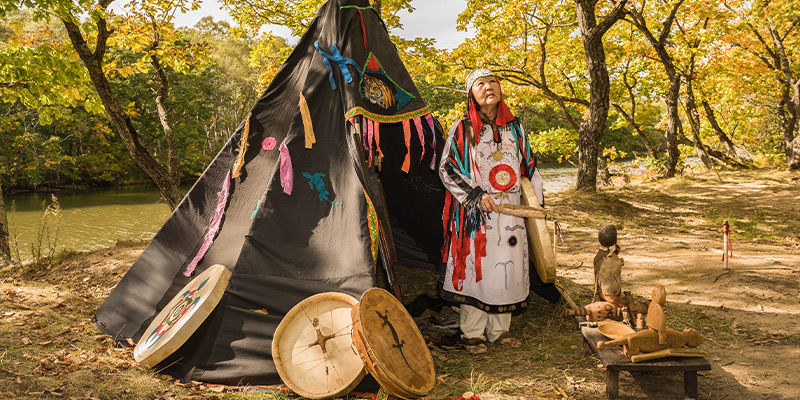
This raises the question, where can you find shamans? Depending on your definition, you can find them in pretty much all corners of the world. Or, if you want to be stricter, then it would be more limited to parts of Asia, such as Siberia and Mongolia.
As you can see, depending on how broadly or strictly you define a shaman, this determines where you can find them. One thing to be aware of, though, is that we should not call those shamans who do not call themselves shamans. People readily call other cultures "shamanic" with little or no understanding of what this term really means, even regarding their own usage of it.
Shamanism was adopted as a term in anthropology and used quite generally, first in Siberia and Asia, then in North America, followed by South America, where shamans are associated with herbs such as salvia divinorum, mescaline-containing cacti, and DMT-containing plants and amphibians. While sometimes the term may be overstretched, it’s worth noting that the indigenous cultures of North America and North Asia have similarities. Though we often think of these places as worlds apart, they are in fact connected by frozen oceans throughout the winter months, and people have moved between them on foot and on sled long before European colonialists reached American shores.
A useful term that may be more applicable to many in the modern world is "neoshamanism". Neoshamanism refers to a variety of practices connected to New Age spiritualism that have little or no connection to "traditional" shamanic practices. Neoshamans might use trance states or psychedelic drugs in order to access a deeper part of themselves, but do not usually attempt to interact with a spirit realm.
Do shamans necessarily use drugs?
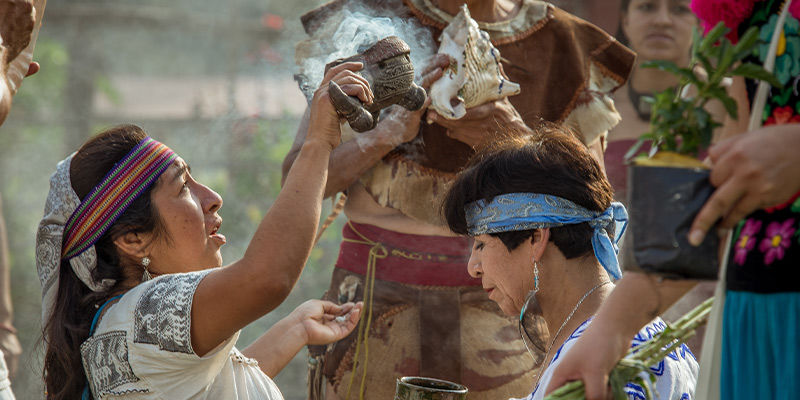
In Northwestern cultures, the term shaman usually goes hand in hand with some vague assumption about a person who uses psychotropic drugs and does something approximately spiritual with them—though what this is, people rarely know.
While it is true that there is an established link between those who were originally called shamans and certain drugs, this relationship is not necessarily compulsory. The key factor that’s often conflated with drug use is the trance states that so-called shamans often enter. These states can be induced by various means other than drugs, including dance and music—specifically singing, drumming, and rattles. These practices are devised in order to commune with spirits, for purposes such as healing or divination.
In neoshamanistic practices, however, these trance states usually serve a more meditative purpose and are about self-healing and therapy, rather than communing with the spirit world.
Why the link between shamans and psychedelic drugs?

All that said, those whose practise what may be called traditional shamanism have often incorporated drugs into their practice, to assist with entering a trance state. In fact, drug use has come to be one of the determining factors in whether a person is called a shaman, which doesn’t tally with history, but does explain why the term's usage has spread across the world and to a wide range of disconnected cultures.
The Sami people of the North Pole have practices that could, by most definitions, be regarded as shamanic. The shamans in these cultures consume Amanita muscaria (fly agaric) mushrooms to enter trance states and commune with the spirit world. This use of psychoactive fungi is fairly widespread throughout the indigenous peoples of Siberia, and it is not without reason that shamanism has become strongly linked to drugs, particularly mushrooms.
Venturing down to South America, those who are often called shamans use psychedelic drugs such as Psilocybe cubensis mushrooms or DMT in the form of ayahuasca or toad secretions. Traditionally, such practices are also used to communicate with spirits. US anthropologists applied the term shaman to these practitioners too, and it has stuck. What’s interesting is that although these people may be called shamans, the cultures themselves are rarely called shamanic.
Criticism of the term shaman
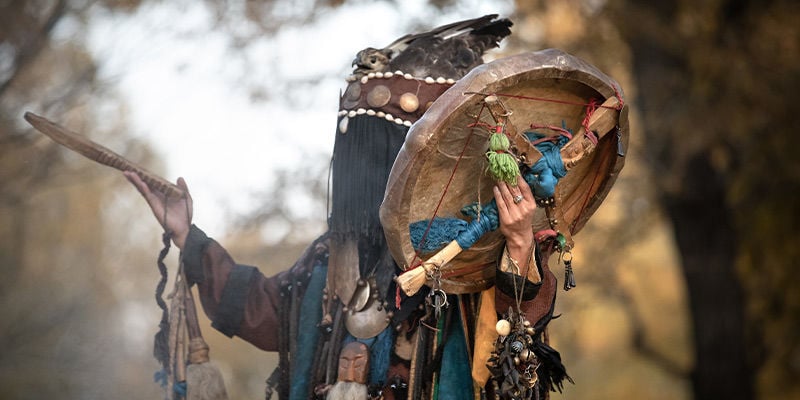
As mentioned, the term shaman is poorly defined and thought by some to be problematic. The main reason for this is that it seems to have been adopted from those who speak Tungusic languages, then applied by European and North American anthropologists to any group or individual from any indigenous culture around the world whose practices resembled those of the Tungusic peoples.
It’s not that the term is necessarily wrongly applied to anyone but those from whom it originates, but rather it should be properly considered before it is used for another group of people. Moreover, we should not only consider the traditions of the people from whom we are borrowing the term, but also those of the people to which we apply it.
Though each culture may look similar from without, from within they are likely to have their own, specific practices and their own language and terms to refer to such practices and their practitioners.
Another criticism is that the term has slightly pejorative undertones, as it often evokes images of "primitive", "savage", or "uncivilised" cultures, even when we know nothing about them. Ter Ellingson criticises the term on the basis that it creates a universalist image of indigenous cultures (Ellingson, 2001).
Should anyone call themselves a shaman?
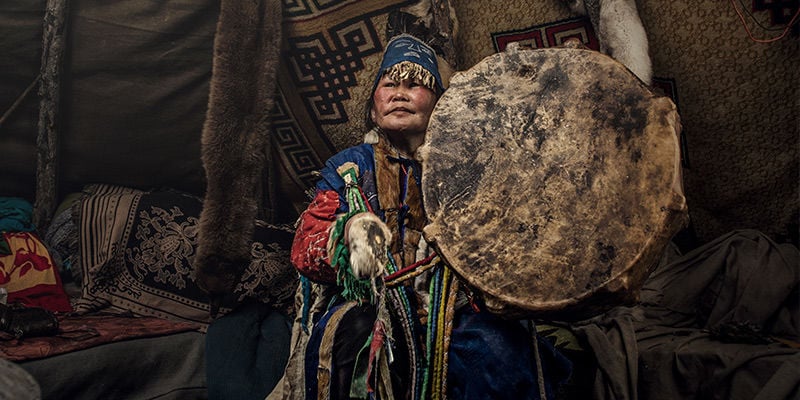
Given that, should anyone be able to call themselves a shaman?
Many in North America, Europe, and beyond style themselves as shamans, yet few will have studied with (or even studied) those from whom the term originates. On the other hand, the term in its broader, more modern usage does serve a purpose, and, even if poorly defined, distinguishes a particular set of practices.
It is not up to us to say who should and should not use this term, but we should at the very least learn a little more about its history before we apply it to ourselves or others.
Shamans and shamanism: A little-understood tradition
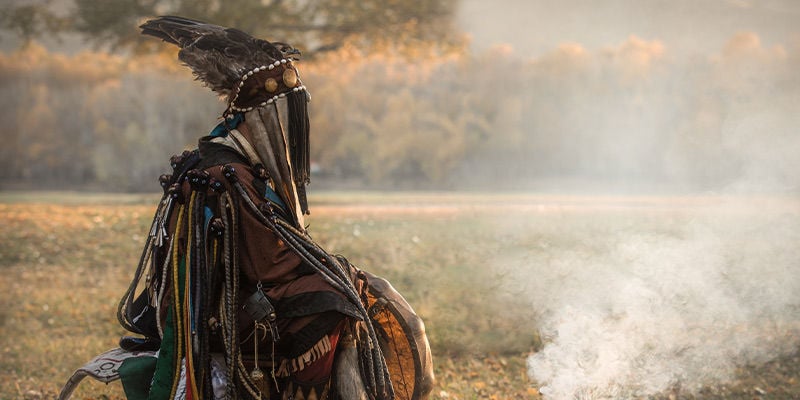
As you can probably tell, these are fairly vague terms with uncertain roots. In fact, it seems hard to trace the term shaman back any further than its first incarnation as an anthropological term used to describe indigenous peoples.
The most important thing to take away is that those who are called shamans, and those who are said to belong to shamanic groups (or religions), are in fact a very diverse range of peoples and cultures who span continents, histories, and ethnicities. Shamanism is an umbrella term that may tell us about aspects of a certain group, but it does not describe them in their entirety. Rather, at most, it denotes a similar range of practices that belong to distinct, larger belief systems.
- Ellingson, & Ter. (2001/1/16). The Ecologically Noble Savage - https://doi.org
-
 5 min
1 August 2022
The 5 Most Potent Psychedelics
Find out about 5 of the strongest psychedelics around. Covering a little of the drug, and giving an overview of the effects, this list is in no way exhaustive, but should give you an idea of what...
5 min
1 August 2022
The 5 Most Potent Psychedelics
Find out about 5 of the strongest psychedelics around. Covering a little of the drug, and giving an overview of the effects, this list is in no way exhaustive, but should give you an idea of what...
-
 3 min
9 February 2020
What Is Tripping On DMT Really Like?
DMT is a psychoactive compound known to produce intense auditory and visual hallucinations. When consuming DMT, many people feel as though they have left their body, the world, or have entered...
3 min
9 February 2020
What Is Tripping On DMT Really Like?
DMT is a psychoactive compound known to produce intense auditory and visual hallucinations. When consuming DMT, many people feel as though they have left their body, the world, or have entered...
-
 3 min
8 January 2020
Ayahuasca vs Magic Mushrooms: What’s the Difference?
Both magic mushrooms and ayahuasca have been used by people for centuries. Let's find out more about each of these mighty psychedelics and also see how they compare.
3 min
8 January 2020
Ayahuasca vs Magic Mushrooms: What’s the Difference?
Both magic mushrooms and ayahuasca have been used by people for centuries. Let's find out more about each of these mighty psychedelics and also see how they compare.
-
 3 min
6 October 2018
Top 5 Mescaline Cacti
Mescaline occupies the esteemed podium of naturally occurring hallucinogens along with DMT and psilocybin. The alkaloid can be found in a variety of cactus species. Here are the top 5...
3 min
6 October 2018
Top 5 Mescaline Cacti
Mescaline occupies the esteemed podium of naturally occurring hallucinogens along with DMT and psilocybin. The alkaloid can be found in a variety of cactus species. Here are the top 5...





 United States
United States











